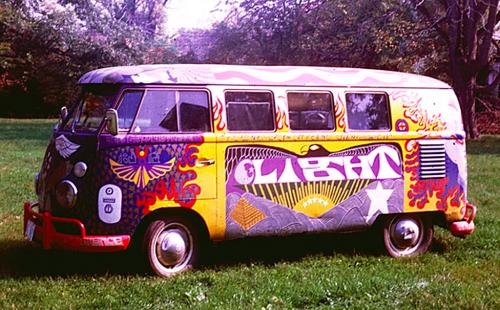Video: the amazing plans to recreate the Woodstock VW bus

The Woodstock music festival remains one of modern history's most iconic events. Attracting an audience of more than 400,000 people seeking three days of peace and music, 1969's harmonious happening was headlined by the likes of Richie Havens, Jimi Hendrix, Janis Joplin and The Who.
Held on Max Yasgur's 600-acre dairy farm, Woodstock set the foundations for music festivals thereafter and holds such cultural significance that the festival site is listed on the National Register of Historic Places.
Now, with the 50th anniversary of Woodstock ramping up for celebrations next year, a chunk of automotive history is being recreated by a team of restoration experts. The 'official vehicle of peace, love and understanding', a 1963 Volkswagen Type 2 bus, is set for reanimation; the original Volkswagen lost in the ether of time.
Why was the VW bus loved by hippies?
With an air-cooled engine churning out less than 50bhp in many case, a boxy design and flexible interior, the slow and ungainly foreign microbus went against the grain of late 1960s American trends. The Volkswagen Type 2 couldn't have been any different from the muscle cars or saloon of the era, which is exactly why those ruling against conformist society loved it. Groovy.
Naturally, with such a gathering of 'hippies' in New York State, Woodstock was littered with Volkswagen's bus for the masses. Often referred to as a Volkswagen camper bus or van, the Type 2 symbolised 1969's summer of love like no other vehicle.
The simple, cheap mechanics and rudimentary design proved alluring to musicians, hippies on the road and intentional communes as transportation for people, belongings and a message of serene philosophy. Volkswagen has thrived off the mantra ever since.
Yet, to artist Bob Hieronimus, the Volkswagen was more than just transport. It was a canvas begging for personality. Commissioned to paint the Woodstock Light Bus for his friends in the Baltimore-based rock band 'Light', during the summer of 1969 Bob designed and painted the Volkswagen by the lakeside. Many substances may have been involved.
After the paintwork was completed, the Volkswagen's first destination just happened to be the Woodstock Music & Art fair – now informally referred to as 'Woodstock', where it captured the spirit of music and the attention of America's entire counter-culture movement. Laced with peace symbols to promote freedom and adventure, the Type 2 fast became the symbol of an event that turned the direction of history.
The Volkswagen's use at Woodstock
The Volkswagen ultimately proved to be more than just band transport. As the rain and mud increased over the next three days, the Type 2 proved to be an invaluable shelter for the band and passersby, not to mention a few famous faces who huddled inside during the worst Mother Nature could muster. Apparently Janis Joplin used the bus to stay dry.
Parked at the mouth of the tree-lined dirt road to the left of the stage, the bus provided a great view for Friday's 5:07pm kick-off. As the crowds amassed, the band and various chancers took to sitting on its roof, which is when this famous image was snapped by the Associated Press photographer:
Since 1969, the promise of oncoming free love and peace has waxed and waned. And, sadly, it appears as though the Volkswagen did, too. After months of searching by TV production company Arcadia upon a chance meeting with Bob Hieronimus, it was presumed that the original bus had long been scrapped.
The sad end of Woodstock's VW
Researching a documentary, the directors of Arcadia discussed society's dependence on symbols. This got Bob talking about the original Woodstock Volkswagen and its perceived cultural status.
Setting off a chain of ideas, the production company decided to track down the Volkswagen and restore it for the 50th-anniversary Woodstock celebrations in August 2019. Bob was enthusiastic about the project, as were the ageing members of the original Light band. The project was on! But there was one big missing piece of the puzzle.
No one knew the whereabouts of the Volkswagen. Groovy.
The trail ran cold after April 1972, when the last known photo of the Type 2 was taken. Hundreds of man hours were spent on a frenzied search to locate the missing bus, yet eventually, the team admitted they were clutching at straws. This is when the bad news arrived.
It was eventually discovered that the bus was used as an errand vehicle by the band before fading into remedial tasks. Ending its life as commune transport, the bodyshell rusted out and the drivetrain failed often enough to see the vehicle traded for spares. A local mechanic stripped the bus and the rusting hulk was most likely recycled.
However, that is far from the end of the story. Determined not to give up, the team opted for Plan B – although the next step was far from easy.
Verwandte Nachrichten
